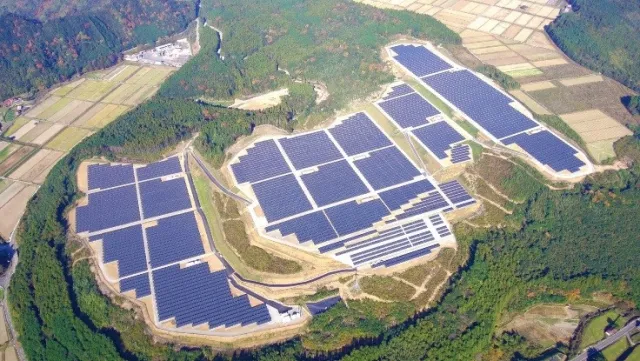Japanese giants have solar operations on the down-low
Aug 2, 2019 10:19 PM ET
- Panasonic offloaded some of its PV interests to Chinese HJT cell maker GS-Solar and Kyocera is advertising further savings from its solar operations but neither business unit acted as a significant drag on wider group figures.

Solar kept a relatively low profile in the latest quarterly results published by Japanese conglomerates Panasonic and Kyocera.
With Osaka-based Panasonic having announced in May it would be spinning off its solar R&D operation and Malaysian PV manufacturing arm into a joint venture with GS-Solar (China) Co Ltd, there was barely any mention of the contribution made by solar to steady overall group figures.
Note was made of the decision to form the TBD solar research and development joint venture which will be 90% owned by Chinese heterojunction cell manufacturer GS-Solar with the unit set to be operational from the start of November.
And the first-quarter update for 2019-20 also mentioned collaboration with the Chinese partner to “optimize development and production capability” in solar for Panasonic. That move will involve GS-Solar assuming the share capital of the Japanese giant’s solar manufacturing operation in Malaysia with the electronics brand announcing in May its solar production facilities in the U.S. and Japan would be unaffected.
Steady returns
The energy systems business which houses Panasonic’s remaining solar interests posted quarterly sales of ¥84.7 billion ($793 million), up from ¥81.6 billion in the opening quarter of the previous fiscal year but down from ¥93.9 billion in the previous three-month period.
That contributed to a quarterly sales in the wider life solutions division, up from ¥444 billion to ¥462 billion on a yearly comparison for a three-month operating profit of ¥12.7 billion, compared to a ¥100 million loss in the previous first quarter.
Despite annual comparison reverses across the board, Panasonic Group posted net quarterly sales of ¥1.89 trillion for a net profit of ¥53.8 billion to the end of June.
Falling solar sales at Japanese electronics rival Kyocera were “more than offset” by cost reductions in the energy business following structural reforms carried out in the last fiscal year. Those cost savings will continue to drive up profitability in the solar business in 2019-20, according to the Kyoto-based conglomerate.
The life and environment business unit that houses the group’s solar business nevertheless made a first-quarter loss of ¥2.59 billion, although at least that came in from the ¥3.02 billion drained in the same period of the previous fiscal year.
Residential PV
A presentation for shareholders prepared to accompany the update made mention of plans to expand the energy business by offering residential PV systems through a ten-year solar leasing program offered by utility The Kansai Electric Power Company. Under the program, homeowners will enjoy free installation and will inherit the system after Kyocera banks its FIT payments for 10 years.
Despite ambitions for household solar Kyocera announced it expects the life and environment business to post a ¥6.4 billion loss for 2019-20 – down from last year’s ¥67 billion reverse – on revenue of ¥94.3 billion.
The fact the electronics giant felt comfortable splurging ¥5.5 billion on its 60th anniversary celebrations was reflected in group quarterly sales revenue of ¥385 billion, earnings before income tax (EBIT) of ¥32 billion and 2019-20 EBIT expectations of ¥180 billion.
Both companies were notable for expressing fears about the global economy linked to the China-U.S. trade war, however.
On a day which saw markets retreat after U.S. President Donald Trump’s tweeted threat to ramp up tariffs on Chinese imports even further, Kyocera noted “increasing uncertainty toward the future caused by trade friction between the U.S. and China” while Panasonic more obliquely referred to “increasingly widespread protectionism”.
Also read

